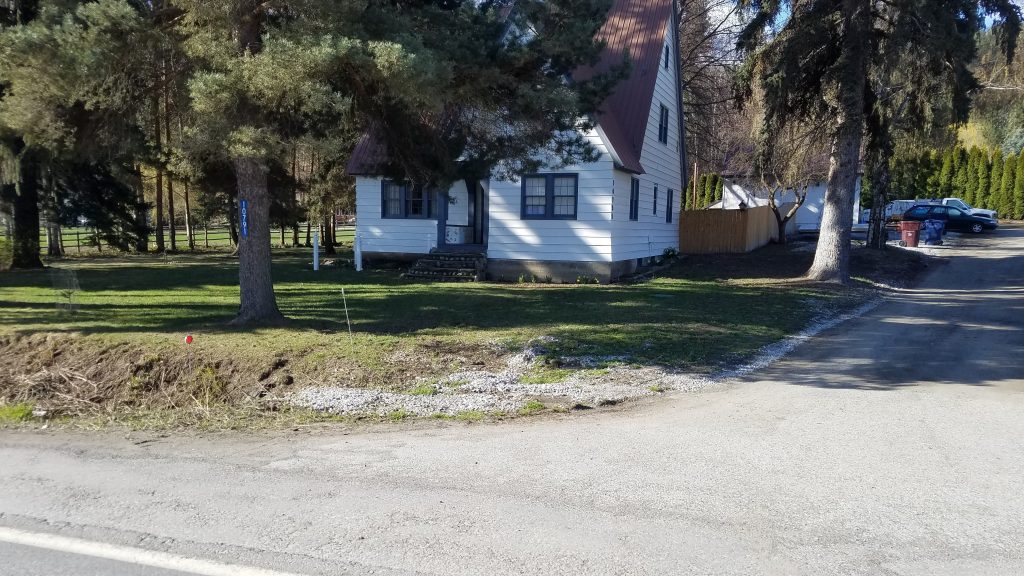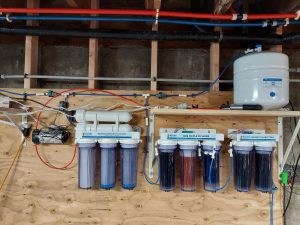
By Elliott Bochstein, RCAC staff writer
If you’ve traveled through the Cascade Mountain foothills northeast of Seattle, there’s a good chance that you passed through Leavenworth, a city in Chelan County known for its lush alpine landscape and a Bavarian theme that draws in travelers from both near and far. Imagine an Oktoberfest celebrated year-round, where steamed brats, hand-baked pretzels, and malty pilsners flow like the Columbia River – and don’t forget the apple cider vinegar-brined sauerkraut and fresh strudel!
Chelan County’s robust commercial agricultural production is perhaps more prolific than its tourism, with orchards and vineyards that occupy thousands of acres around Lake Chelan’s idyllic 50-mile shoreline. If you have apples, cherries, grapes or pears in your crisper, chances are they were harvested in Chelan.
The fruits we love to eat often grow where people like to live – so in the uniquely temperate microclimate of rural Central Washington, growers use significant amounts of fertilizer and other chemicals close to families’ homes. Area residents also depend on private water supplies from wells situated near orchards, so they may end up drinking traces of agricultural runoff that percolate down into public aquifers. According to the U.S. Environmental Protection Agency (EPA), agribusiness is one of the most significant indirect sources of contamination in public waterways, aside from oil refineries, chemical plants and factory farms.
For Lester Stoltz, it wasn’t just the apple-scented breeze wafting through the picturesque Cascadian foothills that made it an ideal place to start a family. In 2008, Stoltz and his wife, both workers at a local hospital, purchased their rural home from his wife’s family. In 1932, her family built the house on a small lot nestled between apple and pear orchards, just beyond Leavenworth city limits. For generations, the family sourced its drinking water from an onsite well. Although they were aware that the water was hard and might contain higher iron levels than usual, they were generally satisfied with its quality.
When the Stoltzes welcomed their first child, they learned that she was born with a congenital heart defect. Fortunately, their daughter survived after undergoing a heart transplant within 90 days of birth. Stoltz wondered if environmental factors played a role in her heart disorder, as genetic tests failed to pinpoint its cause. His search for answers continued while he adjusted to a stay-at-home dad’s often exhilarating (and sometimes dull) life.
During this period, Stoltz took up fishkeeping to pass the time. “I was at home a lot with my baby and looking for a hobby, so I got a fish tank because she liked staring at the fish tank when she was at Seattle Children’s Hospital,” he said. During a routine water change, he was alarmed that his aquarium test strip kit detected high concentrations of nitrates. The family exclusively drank and cooked with bottled water from that point on.
Meanwhile, Stoltz began examining the danger of consuming drinking nitrate contaminated water. Agricultural runoff is a major source of nitrates; and the issue is particularly acute in rural areas close to farms. Consuming nitrates can cause severe health issues and is associated with low birth weight, pre-term birth, neural tube defects, and methemoglobinemia or “Blue Baby Syndrome,” a deadly disease that impairs oxygen transport in infant’s blood. In addition, studies suggest that nitrates may increase the risk of cancer and other illnesses among adults.
Stoltz attempted to contact local well service businesses for a solution, but none were interested in going beyond simple product sales. “I called different well companies and water filtration installers and none of them would come and see if your well was leaking in groundwater from up above or do any sort of well assessment, they all just said that they install this stuff,” he said. “Nobody could help me out.”
During his research, Stoltz discovered an invaluable resource — the free drinking water well assessment Rural Community Assistance Corporation (RCAC) provides through its Individual Well Program. Since 2016, RCAC has provided education and training to well owners in the rural West to help them maintain their wells as part of the EPA/Rural Community Assistance Partnership (RCAP) “Improving Water Quality Through Training & Technical Assistance to Private Well Owners” Project.
RCAC Rural Development Specialist Miles Rinne arrived in Chelan County to conduct the private well assessment. “Miles was just a super nice guy,” Stoltz explained. “He came into my home, and we have an immune-compromised kid, so he was super respectful and wore a mask in our home.”
Rinne conducted a thorough review of the well construction and maintenance, discussed possible contamination sources and analyzed the well’s geologic characteristics. Then came the nitty-gritty of the visit: evaluating the water quality. Stoltz watched with interest as Rinne unboxed the 120WaterAudit Kit and then tested the well water. RCAP and 120Water provided the free test as part of their partnership to provide innovative cloud-based software and digital sample kits for water safety, compliance and wastewater monitoring programs in rural America.
“The unique thing for us is 120Water sends us this box and it has four bottles in it to take the samples with, along with some ice packs,” Rinne said. “This gives us the ability to help the homeowners take the test while we’re there. And then we just tape up the box and put an overnight shipping label on it and FedEx it back. We don’t have to go through a local or not-so-local company to get the tests and then drive it there and drop them off. It makes things more accessible, and the general process of taking these tests is so much easier.”

The 120Water test verified that nitrate concentrations exceeded the EPA Maximum Contaminant Level (MCL) of 10 milligrams per liter. The nitrate contamination likely originated from the adjacent agricultural fields — but it is still unclear whether current farming practices are responsible, given the region’s long history of orchards. Research within the past decade shows that nitrates from agricultural fertilizer leach into groundwater for at least 80 years after application.
“Miles pointed out that it’s not so much a question of what they’re spraying now. It could be what they were spraying decades ago that’s now seeped all the way down and finally made it down to the groundwater,” Stoltz said. “They might be using safe agricultural practices now, but were they doing that 30 or 40 years ago?”
After discussing water treatment options with Rinne, Stoltz set up an affordable reverse osmosis and deionization system in the basement. This system produces pristine water without nitrates, phosphates or any other contaminants. Annual maintenance costs range from $100 to $200, but he considers it a small price to pay for the peace of mind that comes with knowing his water is safe. RCAC’s service impressed him greatly, and he continues to recommend them when the opportunity arises.
“The experience with RCAC was just great,” Stoltz said. “Sure, ignorance might be bliss, and it might just seem better not to go through the trouble of finding out what’s in your well water, but RCAC came through with a professional who was very personable, who explained things and left me with literature that helped it make sense. Plus, the test itself was just great. I’m blown away that it was all free!”
